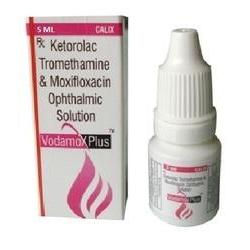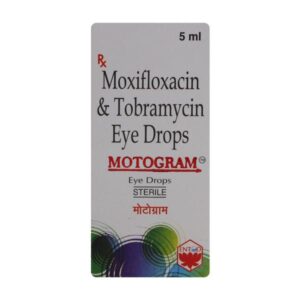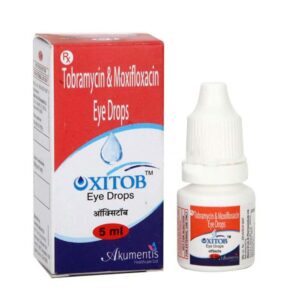TOBRAMYCIN + MOXIFLOXACIN
Tobramycin: Tobramycin is an antibiotic medication that is primarily used to treat various bacterial infections. It belongs to the class of drugs known as aminoglycoside antibiotics. Tobramycin is commonly prescribed for respiratory tract infections, urinary tract infections, skin and soft tissue infections, sepsis, and certain eye infections.
The mechanism of action of tobramycin involves inhibiting bacterial protein synthesis. It binds to the 30S subunit of the bacterial ribosome, preventing the formation of functional protein complexes. This leads to the disruption of bacterial cell membrane integrity and eventual cell death.
The dosage of tobramycin depends on the specific infection being treated, the patient’s age, weight, and kidney function. It is usually administered intravenously or intramuscularly. The dose may also vary based on whether it is being used as an injection or an inhalation solution for respiratory infections. The exact dosing regimen should be determined by a healthcare professional.
Like any medication, tobramycin may cause side effects. Common side effects include nausea, vomiting, diarrhea, rash, and itching. It may also cause potential harm to the kidneys and hearing, especially at higher doses or with prolonged use. Patients with pre-existing kidney problems or hearing impairment may be more susceptible to these side effects. Other rare but serious side effects may include allergic reactions, muscle weakness, respiratory distress, and nerve damage.
It is important to note that tobramycin should only be used under the supervision of a healthcare professional. They can determine the appropriate dosage, monitor for any potential side effects, and evaluate the risk-benefit profile of the medication for each individual patient.
Moxifloxacin: Moxifloxacin is an antibiotic medication used to treat various bacterial infections. It belongs to a class of drugs called fluoroquinolones.
The mechanism of action of moxifloxacin involves inhibiting the bacterial DNA gyrase and topoisomerase IV enzymes, which are essential for DNA replication and repair in bacteria. By interfering with these enzymes, moxifloxacin prevents the bacteria from multiplying and spreading in the body, leading to their eventual death.
The dose of moxifloxacin depends on the specific infection being treated and the patient’s age and underlying health conditions. It is commonly available in oral tablet form, with strengths ranging from 400mg to 800mg. The medication is usually taken once daily, with or without food. For severe infections, intravenous (IV) administration may be necessary.
As with any medication, moxifloxacin can cause side effects. Common side effects may include nausea, diarrhea, headache, dizziness, and abdominal pain. It may also cause tendon damage, so it is important to avoid strenuous physical activity while taking the drug. In some cases, moxifloxacin can cause serious allergic reactions, skin reactions, or liver problems. Patients should consult their healthcare provider if they experience any unusual or severe side effects.
It is important to note that moxifloxacin should only be used to treat bacterial infections and not viral infections such as the common cold or flu. Additionally, it should be taken as prescribed and for the entire duration prescribed by the doctor, even if symptoms improve before the treatment is completed.



